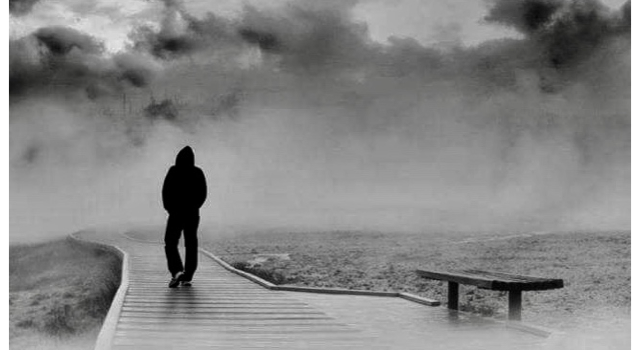The BBC has been accused by more than 100 of its staff of giving Israel…

Catherine The Great.
Few women in history have ever enjoyed so much power, and few have ever made such a dramatic journey, from relatively humble beginnings to the height of absolute monarchy.
Born Sophia Augusta Fredericka Anhalt-Zerbst, the daughter of an obscure German prince, she had been brought up in modern-day Szczecin on the Baltic coast, and had arrived in Russia at the age of 14 thanks to a twist of fate.
To the reigning Russian Empress Elizabeth, the young girl had seemed the ideal bride for her stunted and unhappy nephew, Peter, who would inherit the throne.
A ghastly, miserable marriage followed, and when the time came, Catherine staged a coup against her husband and then looked the other way while her courtiers murdered him.
On September 22, 1762, the woman who eventually came to be known as Catherine the Great appeared at the top of the ceremonial Red Staircase at the Kremlin, dressed in a silver brocade dress.
Slowly, she walked down the steps and across the courtyard.
Rows of priests kissed her hands.
The soldiers of the Imperial Guard saluted.
Then she entered the Assumption Cathedral where a scene of almost unimaginable splendour awaited.
Beneath the domes of its five golden cupolas, the interior of the 15th Century cathedral glowed with light.
Its four massive internal columns, its walls and its ceiling were covered with luminous frescoes.
Before the alter stood the great iconostasis, a golden screen of painted icons studded with jewels.
From the central dome hung a gigantic chandelier weighing more than a ton.
Light filtering down from the cupolas and flickering from thousands of candles, reflected off the surfaces of the jewels and the gold icons.
During a four-hour ceremony, Catherine was anointed with holy oil and draped in imperial purple.
At the climax, she lifted the 9lb crown, crusted with diamonds and topped by a massive ruby, which had been specially designed for her.
She placed it on her own head, and declared herself Empress of Russia.
( Anne Applebaum )
One in Ten Homeless People In The UK Are Ex-Military Personnel.
Shockingly, as many as 9,000 ex-service personnel after leaving the military are homeless and account for one in 10 rough sleepers across the UK.
Charities have warned that the problem of homelessness among former soldiers, sailors and airmen is a “ticking time bomb” which will only get worse if urgent action isn’t taken.
They’re have been harrowing stories from veterans who fought on the front line but now sleep in doorways, graveyards and parks, begging from the passers-by whose freedom they defended.
Many are having to cope with the devastating affects of post-traumatic stress disorder (PTSD), which has led to a cycle of family break-up, addictions to drugs or alcohol and homelessness.
Charities have warned that homelessness is fast becoming the next military scandal following PTSD – and that savage defence cuts would lead to yet more rough sleepers.
The Army has reduced the number of soldiers by 11,500 in the past three years.
A total of 20,000 are due to be axed by 2017.
The RAF and Royal Navy are each shedding 5,000 airmen and sailors.
A report by homeless charity Crisis found that 500 people sleeping rough in London this year (2013) had been in the armed forces, compared with 330 the previous year.
In 2010/11 there were just 77.
The charity estimates that as many as one in 10 homeless people in parts of the UK are former service personnel.
( Ben Glaze, 21.07.2013 ) Source: mirror.co.uk
Miracle Village In Florida Is An Attractive Option For Sex Offenders.
Miracle Village is sugar cane country in south Florida, over two miles from the nearest town.
Around 200 people live in the small, neat bungalows.
More than 100 of them are registered sex offenders – people who were found guilty, and have usually served a prison sentence, for a sex crime.
There is one woman, the rest are men.
Some of them viewed child pornography, or molested their own children.
Others abused minors when they were in positions of power – there is a teacher here, a pastor, a sports coach.
There are those who have been to prison for exposing themselves.
A number of residents were convicted because they had sex with underage girlfriends.
Under Florida’s state law none of them can live within 1,000 feet of a school, day care centre, park or playground.
Cities and counties have extended those restrictions up to 2,500 feet – about half a mile.
And in some places swimming pools, bus stops and libraries are out of bounds too.
The effect has been to push sex offenders out of densely populated areas.
The laws of Florida have made Miracle Village an attractive option.
It was set up in 2009 by the late Dick Witherow, a pastor with Matthew 25 Ministries.
He saw the difficulties sex offenders faced when trying to find a place to live.
Although they can travel pretty much anywhere during the day, at night they must be at an address that complies with the residency restrictions.
Applications to Miracle Village from potential residents arrive daily.
“We get between 10 and 20 a week”, says Jerry Youmans, the intake co-ordinator for the ministry, and also a registered sex offender.
( Linda Pressly, 31.07.2013 ) .. bbc.co.uk
The Greatest American Statesman Of All Time.
The first President of the United States is one of those great men whose deeds are well known but whose personality and private life remain cloudy.
George Washington preferred it that way and his widow, Martha, honoured his wishes by burning all their correspondence after his death.
Washington was very much the product both of his upbringing and of circumstance.
He was born into a respectable but impoverished Virginian family in 1732, which fell further down the social ladder after the death of his father when he was only 11.
But help then came from the richer side of the family, well-placed patronage enabling him to enter Virginian politics and the army as a gentleman of means.
The Seven Years War, a major European conflict that spread to the colonies in North America as the French and British fought for control over Canada, greatly enhanced his reputation as a military commander.
After the conflict, he was made commander of Virginia’s defences, guaranteeing him an influential role when the colonists began to seek independence in 1774.
Washington became commander-in-chief of the so-called Continental Army and held the post throughout the Revolutionary War until independence was won in 1783.
It was at this point that he became not just a great leader but the greatest American statesman of all time.
When he was offered the Presidency he could have turned it into some kind of quasi-monarchical office.
Instead, he remained true to his democratic ideals.
His vision of America became its future.
The Genocide Of Indigenous Australians By English Settlers.
With the expansion of European-dominated capitalist world system to the Australia continent in the late 18th century, the English settlers started terror and genocide on indigenous Australians to expropriate their economic resources and to takeover their homeland.
These crimes against humanity had continued in the 19th century until the indigenous peoples were almost destroyed and the ownership of their land was entirely transferred to the English colonial settlers and their descendants.
These colonial settlers and their descendants have justified their theft and robbery of the resources of the indigenous people in the discourses of race, backwardness, civilisation, and modernity.
The indigenous Australians occupied the continent for more than 65,000 years before the arrival of English colonial settlers in 1788.
Indigenous Australians were organised in families, clans, kinship networks, and ethno-national groups.
Indigenous communities made decisions based on the simple family, extended families, clans and kinship systems.
Kinship influences marriage decisions and governs much of everyday behaviour.
By adulthood people know exactly how to behave, and in what manner, to all other people around them as well as in respect to specific land areas.
Kinship is about meeting the obligations of one’s clan, and forms part of Aboriginal Law, sometimes known as the Dreaming.
( Sage Journals, 07.08.2013 ) .. journals.sagepub.com
Princess Of The Suffragettes.
On November 19, 1910, Princess Sophia Duleep Singh, the third daughter of the last Maharajah of the Punjab, marched side by side with Emmeline Pankhurst at a suffragette demonstration to protest against the Prime Minister Herbert Asquith’s stalling of a Bill that would give votes to women.
The Home Secretary, Winston Churchill, had given orders that the women were not to be allowed near the Prime Minister.
The marchers were met by police armed with batons who felt no compunction about attacking them.
The scenes were violent ( two women died ) and many arrests were made.
Princess Sophia was taken to Bow Street Magistrates, but released without charge.
She was the only suffragette that day to return to a grace-and-favour lodging in Hampton Court, which she occupied for a peppercorn rent by virtue of being Queen Victoria’s God-daughter. Sophia was born at Elvedon, and for the first 30 years of her life was an exotic addition to the society pages thanks to her title, couture clothes and talent for breeding pedigree pugs.
But in 1903 she made her first trip to India, where she encountered the snobberies and casual racism of the British Raj.
Her sister Bamba was already involved in the Indian Nationalist movement, and Sophia, too, became radicalised.
On her return she took up the cause of the Lascars, the Indian merchant seamen who lived in England in conditions of terrible squalor.
But it was the Suffragette movement that changed her life.
Although she never succeeded in being sent to prison ( the government did not want the publicity ), Sophia was part of the No Taxation Without Representation movement, and twice had bailiffs come to Hampton Court to seize property in lieu of unpaid taxes.
She defaced the Census form of 1911 with a scrawled protest, ‘No vote, no Census’.
She sold The Suffragette newspaper outside Hampton Court , which sent George V into a rage, complaining, ‘Can nothing be done to stop her?’
During World War 1, Sophia became a nurse, tending to wounded Indian soldiers (the Punjabi patients could not believe they were being nursed by their Princess).



This Post Has 0 Comments